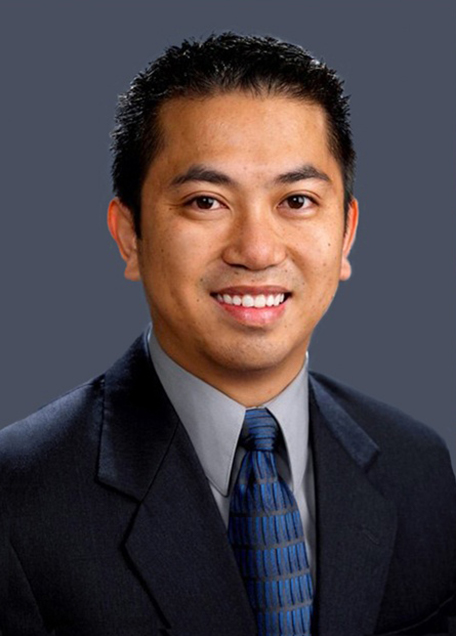Striking a Qualified Medical Evaluator and the Mailbox Rule Revisited

In represented cases in which a panel of qualified medical evaluators (QMEs) is required to resolve a disputed issue, Labor Code 4062.2(c) states, “Within 10 days of assignment of the panel by the administrative director, each party may strike one name from the panel.” Pursuant to Messele v. Pitco Foods, Inc. (2011) 76 CCC 956 (appeals board en banc), it has been well recognized that the mailbox rule applies to that process. So, when a QME panel is served, a party generally is given 10 days from the assignment of it, plus five days for mail, to strike a name from the panel.
Under the current process, however, the parties do not receive the QME panel at the same time. QME panel requests must be submitted electronically via the Division of Workers’ Compensation website. After the request online, the panel is generated automatically. Within one working day, the requesting party is required to serve a copy of the panel and any supporting documentation with a proof of service.
The party requesting the panel frequently receives it immediately or shortly after submitting the request. The other party receives it only after being served by the requesting party. So, must each party issue a strike by the same day?
Previously, in Crawford v. Northgate Landscape Management, 2019 Cal. Wrk. Comp. P.D. LEXIS 4, the WCAB upheld a WCJ’s decision that the mailbox rule does not give the party who requested a QME panel additional time to strike. “Sullivan on Comp” analyzed that case and wrote that “the WCAB’s apparent creation of different time limits to strike for each party are highly questionable.”[1] The analysis has proved to be accurate.
The WCAB recently revisited the issue in Rodriguez v. Continuing Life, LLC, 2022 Cal. Wrk. Comp. P.D. LEXIS 304. In that case, the applicant’s attorney requested a QME panel, and issued a strike 14 days after it served the panel. The defendant asserted that the strike was untimely. The WCAB upheld the WCJ’s decision that the strike was timely.
It explained that Crawford analyzed whether the requesting party is entitled to additional time based on the Code of Civil Procedure § 1013. It explained that pursuant to Messele, California Code of Regulations § 10605 is the controlling authority, and it broadly provides for additional time to exercise “any right” when a document is served “by any method other than personal service.”
The WCAB believed that the WCJ convincingly compared the issuance of the panel to the requesting party with electronic service, thereby entitling the requesting party to additional time under the mailbox extension in CCR 10605. The WCAB found that Crawford reached a different conclusion based on an improper analysis of the applicable mailbox extension.
So because the WCAB interpreted the requesting party’s online receipt of a panel as electronic service, that party would be entitled to 15 days from receipt of the panel to issue a strike (10 days per LC 4062.2(c), plus five for service per CCR 10605). That interpretation, however, does not mandate that both parties issue a strike within the same time limits.
CCR 30(b)(1)(C) requires the requesting party to serve the QME panel within one working day after the panel list is generated. It’s not uncommon, however, for a QME panel to be served on the opposing party several days after it’s issued. In such a situation, is the requesting party’s time period to strike still triggered by the day it received the panel, or by the day it served the panel?
CCR 30(b)(1)(C) states, “Within 10 (ten) days of service of the panel, each party may strike one name from the panel.” The WCJ in Rodriguez believed that language created a unified timeline for making a strike, but the WCAB did not comment on it. In a different context, the appeals board held that a party’s service of a document extends the time to act for all parties, even the serving party. (Smith v. Lee’s Concrete Materials, Inc., 2016 Cal. Wrk. Comp. P.D. LEXIS 409.) If that interpretation applied, the requesting party’s service of a QME panel would also be the trigger for its own time limit to issue a strike.
The issue requires further development. At the very least, the requesting party would have 15 days from receipt of the panel to issue a strike. But it’s possible, if not likely, that the time period to strike is triggered by the requesting party’s service of the panel, and that the time period to strike is the same for both parties.
About the Author
Sure Log, of Counsel, is a specialist in workers’ compensation defense and related labor law issues. He analyzes files for litigation and settlement, conducts research, reviews records to facilitate completion of discovery and drafts a variety of documents, including trial and appellate briefs. He was instrumental in a 2009 case that ended vocational rehabilitation in California.
IEA traces its history to our predecessor organization, “The Fire Underwriters Association of the Pacific” (FUAP) created in 1876 in San Francisco, CA after the post Gold Rush building boom. Its stated purpose was the promotion of harmony and good practice among the claims adjusting profession. Over time, we became an all industry, all-lines organization with national outreach across the United States.
Today, we are committed to providing professional development to a changing workforce with changing needs. IEA offers myriad courses, seminars, and on-demand training to meet our students where they are and help them reach their goals. We are proud of our contribution to better risk analysis and high operating standards in the industry.
-

Sure Log
Attorney of Counsel Michael Sullivan & Associates, LLP
Mr. Log is a specialist in workers’ compensation defense and related labor law issues. He analyzes files for litigation and settlement, conducts research, reviews records to facilitate completion of discovery and drafts a variety of documents, including trial and appellate briefs. He was instrumental in a 2009 case that ended vocational rehabilitation in California.
Mr. Log prepares seminar material and co-authors white papers on significant topics in workers’ comp law, including “An Analysis of the New Regulations Regarding Disputes Over Medical-Legal Expense and Medical Treatment,” “Special Report: A First Look at SB 863,” about the 2012 legislation’s wide-ranging changes to the state’s workers’ compensation system, and “SB 863: Five Years Later.”
Mr. Log is also Co-Author of “Sullivan on Comp,” a 16-chapter objective analysis of California workers’ compensation law, updated monthly.